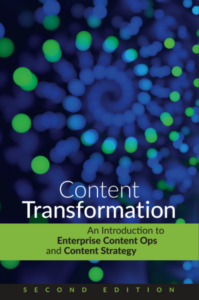Scriptorium’s approach to content strategy is based on management consulting principles. First, we identify business goals that are connected to content problems. We then do a needs analysis and gap analysis, and develop requirements. That work provides the foundation for a recommendation. From that recommendation, we build out the solution.
The key to success is the balance between content and strategy. It’s easy to reduce the cost of the content lifecycle if you don’t care about the quality of the content. If you focus only on the quality of the end result and not on the content creation process, you can end up with beautifully crafted content that’s only usable in a single format, that’s impossible to translate, or that takes entirely too long to create.
When you invest in content strategy, you are committing to a major digital transformation effort. The challenges are significant, but so is the opportunity.











